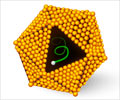YAP molecule acts as a stress sensor that induces elimination of injured liver cells to maintain tissue and organ homeostasis, reveals a new study.

‘YAP molecule is the key factor in the identification and clearance of damaged cells from the liver.’





However, the mechanisms by which such balance is achieved have remained obscure, including for the liver, which is particularly vulnerable to destabilization owing to its function in detoxifying the body. A Japanese team was led by Tokyo Medical and Dental University(TMDU).In a major advance on this issue, a Tokyo Medical and Dental University(TMDU)-led team has shown that a molecule called YAP regulates the fate of liver cells called hepatocytes, determining whether they proliferate to boost the organ's bulk or are degraded and removed. This choice was shown to be dependent on whether the liver cells had been damaged, which deepens our understanding of how this organ maintains itself.
In their work, reported recently in the journal Nature Communications, the team used a range of different techniques to introduce different variants of the YAP gene into mouse liver.
Earlier findings had shown that an activated form of YAP normally enters the nucleus of liver cells where it promotes the expression of genes that cause these cells to proliferate. However, here the team found that the effects on cell fate of introducing YAP into cells differed depending on whether a hydraulic pressure or a virus carrier was used, realizing that it was actually the injury caused by the hydraulic pressure itself that had spurred this difference.
"Once we suspected that cell injury was a key factor determining which effect YAP had on the liver cell population, we analyzed which type of liver injury caused YAP to induce cells to be eliminated rather than multiply using toxic chemicals that damage only specific liver cell types," says Hiroshi Nishina of the Department of Developmental and Regenerative Biology, TMDU.
Advertisement
Specifically, the team showed that YAP is activated upon damage to cells in the liver, leading to the migration of these cells to special blood vessels in the liver. There, they undergo apoptotic cell death and are engulfed and degraded by Kupffer cells, which are liver-specific immune cells.
Advertisement
The obtained findings could also help explain the causes of liver diseases associated with dysregulation of some of the key processes that enable this organ to function.
Source-Eurekalert














